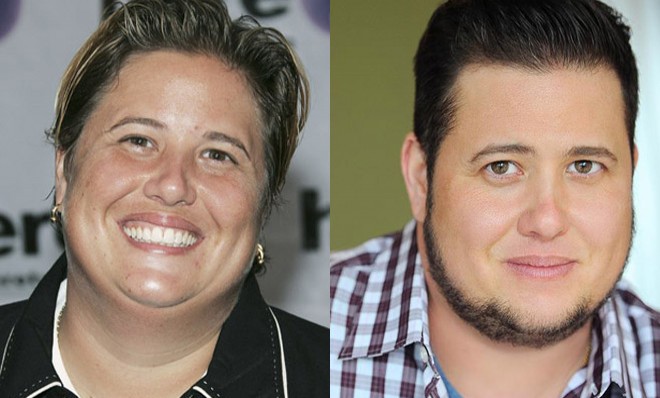Born in the wrong body: The transgender struggle
Some 700,000 U.S. adults are transgender. The fight for acceptance has just begun.

What makes someone transgender?
Transgender is an umbrella term for several kinds of gender dysphoria — a conflict between someone's internal sense of gender and their biological sex at birth. UCLA's Williams Institute, which focuses on legal issues that affect transgender people, estimates that about 0.3 percent of U.S. adults — or 700,000 people — are transgender. The origin of the phenomenon is not well understood. One theory is that during the period in utero when hormones help shape gender, an imbalance occurs that results in a male embryo having a feminized brain, or a female embryo having a masculinized brain. Some psychologists, however, are convinced that gender dysphoria is primarily psychological in origin. Eric Vilain, a UCLA geneticist who has spent his career studying gender identity, says it's likely some mixture of factors. "There is no evidence of a biological influence on transsexualism yet," Vilain says. "Are we expecting to find some biological component? Certainly I am."
How does it feel to be transgender?
The Week
Escape your echo chamber. Get the facts behind the news, plus analysis from multiple perspectives.

Sign up for The Week's Free Newsletters
From our morning news briefing to a weekly Good News Newsletter, get the best of The Week delivered directly to your inbox.
From our morning news briefing to a weekly Good News Newsletter, get the best of The Week delivered directly to your inbox.
From a very early age, people with gender dysphoria say, they have a compelling conviction that something is wrong. Growing up on Long Island, N.Y., and in Wyoming, Robert Ludwig knew he wanted to be a girl and often snuck into his mother's closet to dress up in her clothes. But he tamped down the feelings, played college basketball, joined the Navy, married, and became a father. "It was horrible," Ludwig said. "Every day I was reminded that I couldn't be myself. You look in the mirror and you see something where your body does not match your spirit. That's an inexpressible degree of private grief." In his 40s, Ludwig got divorced and underwent gender reassignment surgery, and is now Gabrielle. Parker Marie Molloy, who transitioned in her mid-20s, describes how she felt when she began taking hormones that changed her appearance from male to female. "Every passing day, looking into the mirror, I'd see someone who looked more like my internal vision of myself and less like the stranger I saw for the first quarter-century of my life," Molloy wrote at Salon. "I finally began to feel 'right' on an emotional level."
Why is this an issue now?
Transgender people and their advocates are asking society to take these internal gender identities seriously, and to respect their right to make a transition. They're calling it "the next civil rights frontier." Sixteen states have passed laws that ban discrimination against transgender people in housing and employment. In August, California enacted the nation's first law allowing transgender K-12 schoolchildren to pick which bathroom and locker room they use, and whether to play on boys' or girls' sports teams. But advocates say the fight for acceptance has just begun. As an example, they point to the derision that greeted the recent announcement by Bradley Manning, a U.S. soldier convicted of leaking secret documents to WikiLeaks, that he was transgender and would henceforth identify himself as Chelsea. The Army said it would not provide Manning with the hormone therapy she's requested, and she will be jailed with male inmates at Fort Leavenworth, Kan.
What does the opposition say?
A free daily email with the biggest news stories of the day – and the best features from TheWeek.com
Social and religious conservatives say that recognizing transgender rights is a bridge too far. "The reality is that humans are born male or female," says Jeff Johnston of the group Focus on the Family. His organization opposes laws that legitimize what he calls "gender confusion," saying that such laws encourage impressionable young people to think, "I can be whatever I want to be." Opponents also say that giving transgender people rights will put other people in uncomfortable situations. In Miami-Dade County, Christian conservatives recently defeated a proposal that would have prohibited discrimination against transgender people. The law would have allowed "men who call themselves women to go into women's bathrooms, showers, dressing rooms, and locker rooms," said Anthony Verdugo of the Christian Family Coalition. "That is a great risk to women and children."
What's the next big fight?
How to deal with children and adolescents who believe they are transgender. Even among experts in the field, this is a controversial subject, since one study found that only about 20 percent of pre--adolescent children who say they're in the wrong gender wind up deciding later to go ahead with a transition. But with a growing number of pre-pubescent children declaring themselves transgender, instead of hiding their feelings, some clinics are giving 12- and 13-year-olds "puberty blockers"—drugs and hormones that keep them from developing secondary sex characteristics. The blockers are reversible, so they buy time in which teens can decide if they really want to make a transition. "Now these kids are beginning to have a voice," says Dr. Robert Garofalo, a specialist in gender and sexuality at Lurie Children's Hospital in Chicago. "That's what's been making things interesting and challenging."
People with 'two spirits'
Native Americans had a term for males who wanted to live like women, and women who wanted to live like men: "two spirits." In more than 150 tribes, "two spirits" were seen as having a special role, and their gender ambiguity was fully accepted. "Whatever culture, country, or epoch you choose to research, you will find a history of individuals who, if they lived now, we might now refer to as trans people," says Stephen Whittle, a British transgender historian and activist. But it wasn't until the 20th century that gender transitions were medically possible. The first transsexual to make a splash in popular culture was Christine Jorgensen, born George Jorgensen, whose transition from male to female at a Danish clinic was trumpeted on the front page of the New York Daily News in 1952 under the headline "Ex-GI Becomes Blonde Beauty." In more recent years, among the people to make publicized gender transitions were tennis player Renée Richards, Chaz Bono, author Jan Morris, Matrix director Lana Wachowski, billionaire Jennifer Pritzker, and Navy SEAL Kristin Beck.
-
 Political cartoons for December 15
Political cartoons for December 15Cartoons Monday’s political cartoons include Time's person of the year, naughty and nice list, and more
-
 Who is fuelling the flames of antisemitism in Australia?
Who is fuelling the flames of antisemitism in Australia?Today’s Big Question Deadly Bondi Beach attack the result of ‘permissive environment’ where warning signs were ‘too often left unchecked’
-
 Bulgaria is the latest government to fall amid mass protests
Bulgaria is the latest government to fall amid mass protestsThe Explainer The country’s prime minister resigned as part of the fallout